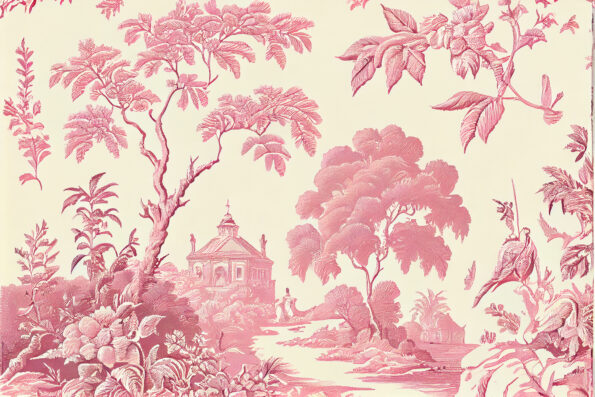Here’s The History Behind The Iconic Toile Print

You might have seen this print around in vintage settings or among your grandmother’s antiques but were unaware of its name; it’s the toile print.
Toile print involves blue or red repeating patterns detailing intricate scenes laid against a white background. Sound familiar now?
Toile is considered an old-fashioned design that was once popular during certain historical eras, but it is currently making a modern revival. Big fashion brands like Dior and Oscar de la Renta have featured it in their collections in recent years.
Toile translates to “linen cloth” in French. Although the name of the famous print is in French, it did not originate from there.
Toile was invented in Ireland during the eighteenth century, inspired by the designs found on Chinese porcelain. Initially, it was used by Irish tailors to test a pattern on cheap, white fabric.
However, its popularity spread across Europe, and it became a well-known decorative product in France and Britain. A man named Christophe-Phillippe Oberkampf opened the first toile factory in France in 1760.
The city in which the toile factory was located went by the name of Jouy-en-Josas. Naturally, therefore, the material was branded as “Toile de Jouy.”
Oberkampf came from a family of fabric dyers and wisely chose to set up shop in Jouy-en-Josas because of its proximity to water. The Bievre River provided a place where fabric could be easily washed.
The patterns on toile usually depicted pastoral scenes in a single color, such as a couple having a picnic by the lake or a family enjoying the countryside. Patterns also included floral designs or other nature-inspired images.

Elka – stock.adobe.com – illustrative purposes only
The fabric was used for upholstery, like curtains, bedding, and eventually, wallpaper, clothing, and fine china. It is still used for the same purposes today, but the patterns have evolved.
Now, we’re seeing more kinds of prints with various animals, plants, and celestial themes. In addition, the trend has been moving away from the traditional reds and blues and displaying a wider range of colors, like magenta, green, beige, and gray.
Embrace the trend and incorporate some classic French styles in your home for a cozy cottage vibe!
If true crime defines your free time, this is for you: join Chip Chick’s True Crime Tribe
Sign up for Chip Chick’s newsletter and get stories like this delivered to your inbox.
More About:Home





